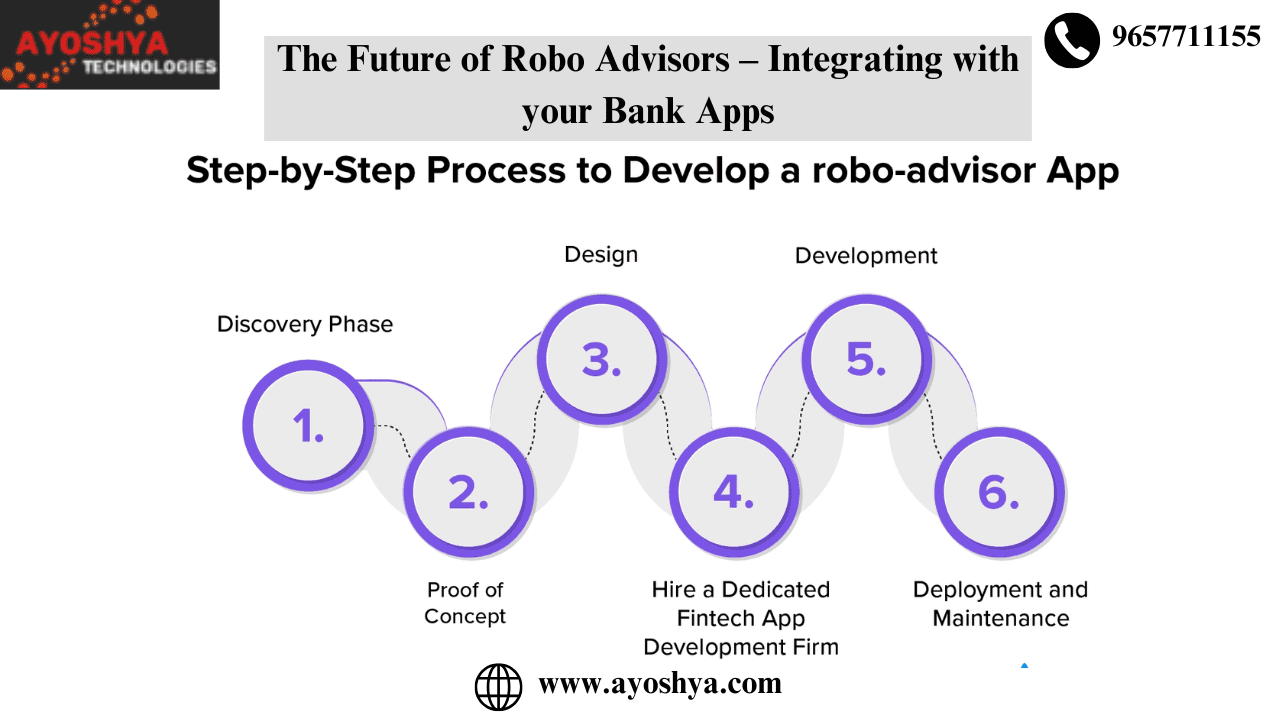Comparing Robo Advisors to Traditional Financial Advisors
Comparing Robo Advisors to Traditional Financial Advisors
- Robo Advisors offer lower fees than traditional financial advisors.
- Robo Advisors provide automated portfolio management; traditional advisors offer personalized advice.
- Traditional advisors excel in complex financial planning; robo advisors in straightforward investment management.
- Robo Advisors are accessible 24/7; traditional advisors are available during business hours.
- Traditional financial advisors may offer more investment options beyond standard portfolios.
Introduction To Robo Advisors
Definition and How Robo Advisors Work
Robo advisors are digital platforms providing automated, algorithm-based financial planning services with little human supervision.
They gather clients’ information about their financial situation and future goals through an online survey. Then, using this data, they offer advice and automatically invest client assets.
The Technology Behind Robo Advisors
The core of robo advisors’ functionality is rooted in complex algorithms, machine learning, and artificial intelligence (AI).
These technologies enable robo-advisors to process vast amounts of data to make investment decisions, rebalance portfolios, and accurately predict future market trends.
Machine learning allows these platforms to improve their investment strategies over time based on new data and changing market conditions.
Typical Services Offered by Robo Advisors
Robo advisors typically provide a range of services that include:
- Automatic portfolio rebalancing
- Tax-loss harvesting
- Retirement planning
- Asset allocation
- Access to diversified investment portfolios
These services are designed to optimize the investor’s financial outcomes while minimizing taxes and fees.
Key Advantages of Robo Advisors
The main benefits of using robo-advisors include:
- Cost: They often have lower fees than traditional financial advising services, making them an affordable option for many investors.
- Accessibility: Being online platforms, they are accessible 24/7, allowing users to check their investments or make changes at any time.
- Simplicity: Robo advisors simplify the investment process, making it easy for individuals with little to no investment experience to start growing their wealth.
- Efficiency: Automated systems manage investments more systematically and can react quickly to market changes.
What are Traditional Financial Advisors

Definition and The Role of Traditional Financial Advisors
Traditional financial advisors help individuals manage their finances and plan for their future. Unlike robo advisors, they provide personalized advice based on face-to-face meetings and discussions, tailoring their services to each client’s needs and circumstances.
The Human Touch: Personalization and Relationship in Financial Planning
The human element is a significant advantage of traditional financial advisors. They build personal relationships with their clients, offering customized advice that considers the client’s emotions, life changes, and complex financial situations. This personal touch can be crucial for clients going through significant life events or those with unique financial scenarios.
Typical Services Offered by Traditional Financial Advisors
Services offered by traditional financial advisors often encompass:
- Personalized financial planning and advice
- Estate planning
- Risk management
- Tax planning and optimization
- Retirement planning
These services are comprehensive and tailored to the individual’s long-term financial health.
Key Advantages of Traditional Advisors
The primary benefits of working with traditional advisors include:
- Personalized Advice: They offer customized financial planning tailored to each client’s needs.
- Complex Financial Planning: Traditional advisors excel in navigating complex financial situations, offering strategies that an automated service might not.
- Human Interaction: Discussing financial matters face-to-face adds trust and understanding to the advisor-client relationship.
- Flexibility: They can adapt plans and strategies based on changing life circumstances or financial goals.
In summary, the choice between robo-advisors and traditional financial advisors hinges on the investor’s preferences for cost, accessibility, simplicity, and personalized service.
Robo advisors offer an efficient and low-cost entry point for those new to investing or with straightforward financial goals. In contrast, traditional advisors shine in providing bespoke advice and managing complex financial planning needs, thanks to their personal touch and in-depth understanding of individual client situations.
Fee Structures of Robo Advisors

Overview of Common Fee Structures for Robo Advisors
Robo advisors have democratized access to investment management through their cost-effective fee structures. They typically employ straightforward, transparent pricing models to appeal to a broad spectrum of investors.
Percentage of Assets Under Management (AUM)
The most common fee structure among robo-advisors is a percentage of the assets under management. Fees typically range from 0.25% to 0.50% of AUM annually. This means that if you invest $10,000 with a robo advisor charging 0.25%, you would pay $25 per year in management fees.
Subscription Models
Some robo-advisors opt for a subscription model, charging a flat monthly or annual fee regardless of account size. This model can be particularly cost-effective for investors with larger balances, as the fee doesn’t scale with the investment size.
Additional Costs to Consider
Beyond the direct fees charged by robo advisors, investors should be mindful of other potential costs:
- Fund Fees: Investments made into ETFs or mutual funds carry their expense ratios, separate from the robo advisor’s management fee.
- Withdrawal Fees: Some platforms may charge fees for withdrawals or account closures.
Comparing Fees Across Popular Robo Advisor Platforms
When comparing robo advisors, it’s crucial to look beyond the headline management fee and consider the total cost of investing, including fund fees and additional charges.
Platforms vary widely in their pricing structures and the additional services they offer in exchange for those fees, such as tax-loss harvesting or financial planning services.
Fee Structures of Traditional Financial Advisors

Overview of Common Fee Structures for Traditional Advisors
Traditional financial advisors offer personalized investment advice and financial planning services, with fee structures varying significantly from one advisor to another.
Percentage of AUM
Like robo advisors, many traditional advisors charge a fee based on a percentage of assets under management, often ranging from 1% to 2%. This fee structure aligns the advisor’s incentives with the client’s success but can be costlier, especially for larger portfolios.
Fixed Fees
Some advisors charge a fixed fee for their services, a one-time charge for a specific financial plan, or an annual fee covering ongoing advice. Fixed fees provide clarity and predictability for both the advisor and the client.
Hourly Rates
Advisors offering consultation on an hourly basis charge for the time spent advising or managing specific aspects of a client’s financial situation. This model can be economical for clients seeking advice on particular issues rather than comprehensive management.
Commission-Based Fees
Commission-based advisors earn money through commissions on their clients’ financial products. While this can lower direct costs, it may lead to potential conflicts of interest if the advisor is incentivized to recommend specific products.
The Impact of Fees on Investment Returns Over Time
Regardless of the fee model, it’s vital to understand the long-term impact of advisory fees on investment returns.
Higher fees can significantly erode the compounding effect of investments over time, making fee structure a critical consideration in choosing between robo-advisors and traditional financial advisors.
Direct Comparison Between Robo Advisors and Traditional Financial Advisors

Side-by-Side Comparison of Fees
- Robo Advisors generally charge between 0.25% and 0.50% of AUM annually. Additional costs may include fund fees, though many robo-advisors select low-cost funds.
- Traditional Financial Advisors: Fees range from 1% to 2% of AUM annually, with some offering fixed, hourly, or commission-based pricing. Potential for higher costs due to personalized services.
Breakdown of Services Offered about Fees
- Robo Advisors: Provide automated portfolio management and tax optimization strategies like tax-loss harvesting and automatic rebalancing. Some platforms offer financial planning tools and advice via digital interfaces.
- Traditional Financial Advisors: Offer comprehensive financial planning, including retirement planning, estate planning, tax advice, and personalized investment strategies. Human advisors can provide nuanced advice based on complex personal circumstances.
Case Scenarios: When is One More Cost-Effective than the Other?
- Robo Advisors: These are more cost-effective for individuals with straightforward financial situations, those starting with smaller investment amounts, or investors who prefer a hands-off approach.
- Traditional Financial Advisors: This can be more cost-effective for individuals with complex financial situations, higher net worth requiring personalized strategies, or those who value direct, personal advice.
Choosing the Right Advisor for Your Needs

Factors to Consider Beyond Fees
- Investment Goals: Determine whether your goals require the personalized touch of a traditional advisor or if they can be met through the automated strategies of a robo-advisor.
- Level of Service Needed: Assess whether you need comprehensive financial planning or if portfolio management is your primary requirement.
- The complexity of Financial Situation: Complex situations, including estate planning or managing multiple income sources, may benefit more from a traditional advisor.
Questions to Ask Before Choosing an Advisor
- What is your fee structure, and how will it impact my investment returns over time?
- Can you detail the range of services you provide and how they align with my financial goals?
- How do you personalize investment strategies for individual clients?
- What is your approach to financial planning, and how do you adapt to changes in the market or my circumstances?
The Role of Personal Preference and Comfort in the Decision-Making Process
Ultimately, the choice between a robo-advisor and a traditional financial advisor is also a matter of personal preference and comfort.
Some investors might value the efficiency and lower cost of robo-advisors, while others might prioritize personalized advice and relationships with traditional financial advisors.
Evaluating your comfort level with digital platforms, your desire for direct interaction, and your confidence in automated vs. human advice will guide your decision to the option that best fits your needs and investment style.
5 Major Differences Between Robo Advisors and Human Advisors

- Cost Structure:
- Robo Advisors typically charge lower fees, often based on a percentage of assets under management (AUM), with rates ranging from 0.25% to 0.50%. Some may also offer a flat monthly fee, regardless of portfolio size.
- Human Advisors: Generally charge higher fees, ranging from 1% to 2% of AUM annually. They may also offer fixed-fee, hourly, or commission-based pricing structures.
- Investment Management Approach:
- Robo Advisors: These companies utilize algorithms and artificial intelligence (AI) to manage portfolios, automatically rebalancing and adjusting investments based on market conditions and investors’ goals.
- Human Advisors: Offer personalized investment strategies, considering the broader context of an individual’s financial situation, preferences, and life goals. They can adapt strategies based on nuanced understanding and personal interactions.
- Accessibility and Interaction:
- Robo Advisors: These are available 24/7 via online platforms, allowing investors to check their portfolios, adjust their investment preferences, and access financial planning tools anytime.
- Human Advisors: These providers provide a more traditional, face-to-face advisory experience, with meetings scheduled during business hours. However, many now offer digital communication options as well.
- Services and Support:
- Robo Advisors: Focus mainly on portfolio management, with some offering additional services like tax-loss harvesting and retirement planning. Direct human support may be limited or available through customer service channels.
- Human Advisors: Offer various financial planning services, including estate planning, tax advice, insurance planning, and more personalized support during financial decisions or market volatility.
- Personalization and Complexity:
- Robo Advisors: Best suited for straightforward investment management and those with simpler financial situations. The level of personalization is based on the input from online questionnaires.
- Human Advisors: Excel in managing complex financial situations, offering customized advice that considers intricate aspects of an individual’s financial life, including family dynamics, business interests, and legacy planning.
These differences highlight the distinct advantages and potential limitations of robo-advisors and human advisors, guiding individuals in choosing the advisory service that best fits their financial needs, preferences, and complexity.
FAQs
What are the main differences between robo-advisors and traditional financial advisors?
Robo advisors use algorithms for automated portfolio management, often resulting in lower fees and 24/7 accessibility. Traditional advisors provide personalized advice, excel in complex financial planning, and may offer more diverse investment options.
How do robo-advisors manage my investment portfolio?
Robo advisors automatically allocate and rebalance your investments based on your risk tolerance and financial goals, using sophisticated algorithms and machine learning.
Can traditional financial advisors offer more personalized investment strategies?
Traditional advisors tailor investment strategies to your unique financial situation, goals, and preferences, offering a more customized approach than robo-advisors.
Are robo-advisors more cost-effective than traditional advisors?
Generally, yes. Robo advisors typically charge lower fees because they automate many processes, while traditional advisors may charge higher rates for personalized services.
How do traditional advisors add value compared to robo-advisors?
Traditional advisors offer in-depth, personalized financial planning, including estate planning, tax advice, and handling of complex financial situations, providing value through expert judgment and personalized advice.
Can I access my robo-advisor at any time?
Yes, robo advisors are accessible 24/7 via online platforms, allowing you to check your portfolio, make adjustments, or contact customer service anytime.
Do traditional financial advisors have more investment options?
Often, yes. Traditional advisors may have access to a broader range of investment products, including exclusive or custom investment opportunities not available through robo-advisors.
How do I choose between a robo-advisor and a traditional financial advisor?
To decide which type of advisor is best for you, consider your financial goals, need for personalized advice, complexity of your financial situation, and budget for advisor fees.
Can robo-advisors help with retirement planning?
Many robo-advisors offer retirement planning services, using algorithms to create and manage a portfolio that meets clients’ retirement goals.
Do traditional financial advisors offer more hands-on service during market volatility?
Yes, they can provide personalized advice and reassurance during market downturns, helping you make informed decisions based on your investment strategy.
Are there any hidden fees with robo advisors?
While robo-advisors are known for their low-cost structure, it is important to read the fine print regarding additional fees, such as fund or withdrawal fees.
How do I communicate with a traditional financial advisor?
Communication with a traditional advisor typically happens through scheduled meetings, phone calls, or emails, allowing for direct, personalized interaction.
Can robo-advisors automatically adjust my portfolio based on market changes?
Yes, robo advisors continually monitor your portfolio and the markets, automatically rebalancing to maintain your desired asset allocation.
What kind of support do robo-advisors offer?
Most robo-advisors provide customer support through digital channels, and some may offer access to human advisors for questions or further financial planning.
Is a traditional financial advisor worth the cost?
For individuals with complex financial situations or those who prefer a personalized relationship with their advisor, the cost can be justified by the tailored advice and comprehensive planning services offered.
you may be interested in this blog here:-
SAP Consulting | Ayoshya Technologies
SAP ABAP on HANA Interview Questions: Mastering the Essentials
Unleashing the Power of Search Help Exit in SAP ABAP
Unlocking SAP Implementation Partners Success: The Essential Role



























































